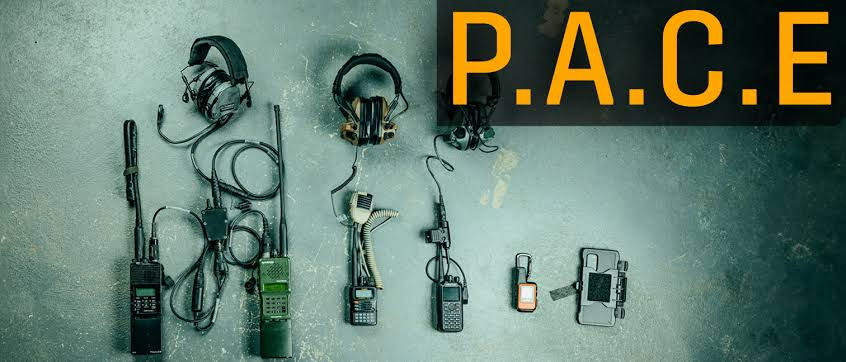
The Importance of Redundancy
- gbucknell

- Aug 13, 2024
- 3 min read
The Importance of Redundancy in PACE Communications Plans: Why 2 is 1, and 1 is None
In the realm of Preparedness and especially when travelling abroad or in the wilderness, having a PACE plan for your communications is critical.
In communications planning, PACE stands for:
1. Primary: The main method of communication that is used under normal circumstances.
2. Alternate: A secondary method that can be used if the primary method fails.
3. Contingency: A third method that can be used if both the primary and alternate methods fail.
4. Emergency: A final method that can be used if all other methods fail, ensuring that there is always a means of communication available.
The PACE plan is designed to ensure that communication remains possible under a variety of circumstances, emphasizing the importance of redundancy and preparedness..
A well-designed communications plan ensures that information flows seamlessly during emergencies, enabling coordinated responses and minimizing confusion. One critical concept in this context is redundancy: the principle that having multiple layers of communication options is essential for resilience. The adage “2 is 1, and 1 is none” encapsulates this idea perfectly. In this blog post, we'll explore why redundancy is crucial in PaCE communications and how to implement it effectively.
Understanding Redundancy in Communications
Redundancy in communications means having backup systems and alternative methods to ensure continuous information flow even when primary channels fail. It involves creating multiple pathways for communication so that if one method becomes unavailable, others can seamlessly take over.
Why Redundancy Matters
1. Unpredictability of Emergencies
Emergencies by their nature are unpredictable. Natural disasters, technological failures, or human errors can disrupt primary communication channels. Redundant systems ensure that when the unexpected happens, your ability to communicate remains intact.
2. Increased Reliability
Having multiple communication options increases the reliability of your overall system. If one method is compromised, another can be used immediately, preventing any break in communication.
3. Enhanced Resilience
Redundancy builds resilience into your PaCE plan. It ensures that your organization can adapt to and recover from disruptions quickly. This adaptability is crucial for maintaining operations and ensuring safety during crises.
4. Preventing Single Points of Failure
Relying on a single communication method creates a single point of failure. If that method fails, you’re left without any means of communication. Redundant systems eliminate this risk by providing alternative options.
Implementing Redundancy: Best Practices
1. Diversify Communication Methods
Incorporate a mix of communication methods such as radios, satellite phones, internet-based platforms, and traditional phone lines. Each method has its strengths and weaknesses, and using a variety ensures coverage across different scenarios.
2. Regular Testing and Drills
Regularly test all communication methods to ensure they are functioning correctly. Conduct drills to simulate emergency situations and practice switching between different communication channels seamlessly.
3. Documentation and Training
Document your communications plan thoroughly and ensure that all team members are trained on how to use each method. This knowledge is crucial for swift action during an actual emergency.
4. Backup Power Sources
Ensure that your communication devices have backup power sources, such as batteries or generators. Power outages are common during emergencies, and having an independent power supply ensures your devices remain operational.
5. Prioritize Critical Information
Identify the most critical information that needs to be communicated during an emergency and prioritize its transmission. This ensures that even if bandwidth or capacity is limited, the most important messages get through.
Real-World Examples
Several real-world incidents underscore the importance of redundancy in communication plans:
- Hurricane Katrina (2005): The devastating impact of Hurricane Katrina highlighted the failures of communication systems. Many primary communication channels were disrupted, underscoring the need for robust backup systems.
- Japan Earthquake and Tsunami (2011): During this disaster, redundant communication systems, including satellite phones and social media platforms, played a critical role in coordinating rescue and relief efforts.
Conclusion
In PaCE planning, redundancy is not a luxury but a necessity. The principle of “2 is 1, and 1 is none” should be a guiding mantra when designing and implementing your communications plan. By ensuring that you have multiple, reliable communication methods in place, you can significantly enhance your organization’s resilience and ability to respond effectively during emergencies. Remember, when it comes to communication in crises, redundancy isn’t just about having backups – it’s about ensuring continuity and saving lives.
Embrace redundancy, test your systems regularly, and be prepared for the unexpected. In doing so, you'll be better equipped to maintain operations, ensure safety, and manage crises with confidence.









Comments